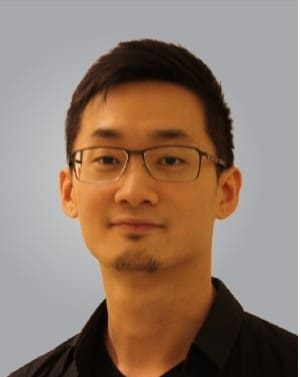
William Huang
Assistant Professor
Contact Information
- [email protected]
- 168 Mergenthaler Hall
- Group/Lab Website
- Google Scholar Profile
Research Interests: Biochemical reactions at the cell membrane; signal transduction; single-molecule imaging, spectroscopy, and assays
Education: PhD, University of California, Berkeley
William Y. C. Huang is an Assistant Professor in the Department of Biophysics at Johns Hopkins University. He received his B.S. in Chemistry from National Taiwan University in 2010, and his Ph.D. in Chemistry from the University of California, Berkeley in 2016 in the laboratory of Dr. Jay Groves. He then expanded his research as a postdoctoral scholar at Stanford University in the laboratory of Dr. James Ferrell from 2018-2023. He began his independent career at Hopkins in 2024. Dr. Huang has a longstanding interest in biochemical reactions at the cell membrane, especially those involved in cellular signal transduction. He has developed extensive imaging-based membrane assays that establish an experimental foundation for studying complex systems on membranes. Dr. Huang’s awards include an NIH Pathway to Independence Award.
Research in the Huang laboratory broadly encompasses the chemistry and biology of biochemical reaction systems at the cell membrane. Biochemical reactions at the membrane are among the most fascinating reaction systems. The presence of membrane surfaces introduces a new dimension to chemistry and physics that is rarely observed in solution biochemistry. This architecture, coupled with complex reactions, gives rise to elaborate spatial and temporal organization in cells that regulates a wide range of cellular functions. The Huang laboratory explores this theme in the context of signal transduction, the process by which cells integrate chemical information. The research approach combines optical methods and kinetic modeling to analyze biochemically reconstituted systems and living cells. The integration of physical and biological methods enables the development of advanced imaging assays in membrane configurations, offering new ways to define, characterize, and manipulate signaling systems. Innovations as such are contributing to our quantitative understanding of signal transduction, with the overarching goal of elucidating the principles governing biochemical reactions at the membrane.
View William Huang's complete publications on Google Scholar.
Selected Publications:
Membrane localization accelerates association under conditions relevant to cellular signaling
W. Y. C. Huang, S. G. Boxer, and J. E. Ferrell
Proc. Natl. Acad. Sci. U.S.A. 2024, 121, e2319491121.
Cytoplasmic organization promotes protein diffusion in Xenopus extracts
W. Y. C. Huang, X. Cheng, and J. E. Ferrell
Nature Communications 2022, 13, 5599.
Relating cellular signaling timescales to single-molecule kinetics: A first-passage time analysis of Ras activation by SOS
W. Y. C. Huang, S. Alvarez, Y. Kondo, J. Kuriyan, and J. T. Groves
Proc. Natl. Acad. Sci. U.S.A. 2021, 118, e2103598118.
A molecular assembly phase transition and kinetic proofreading modulate Ras activation by SOS
W. Y. C. Huang, S. Alvarez, Y. Kondo, Y. K. Lee, J. K. Chung, H. Y. M. Lam, K. H. Biswas, J. Kuriyan, and J. T. Groves
Science 2019, 363, 1098-1103.
Phosphotyrosine-mediated LAT assembly on membranes drives kinetic bifurcation in recruitment dynamics of the Ras activator SOS
W. Y. C. Huang, Q. Yan, W. C. Lin, J. K. Chung, S. D. Hansen, S. M. Christensen, H.-L. Tu, J. Kuriyan, and J. T. Groves
Proc. Natl. Acad. Sci. U.S.A. 2016, 113, 8218-8223.